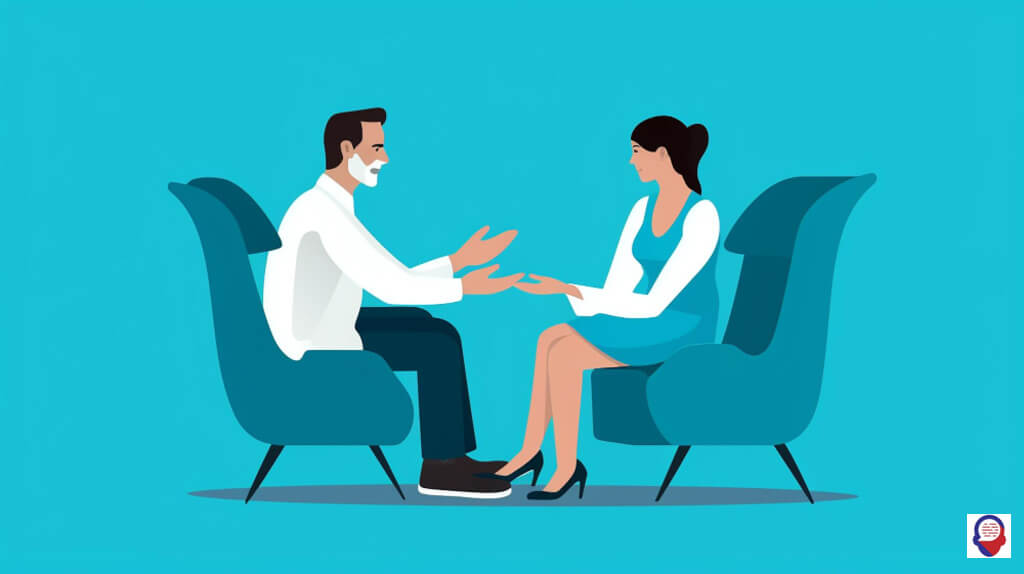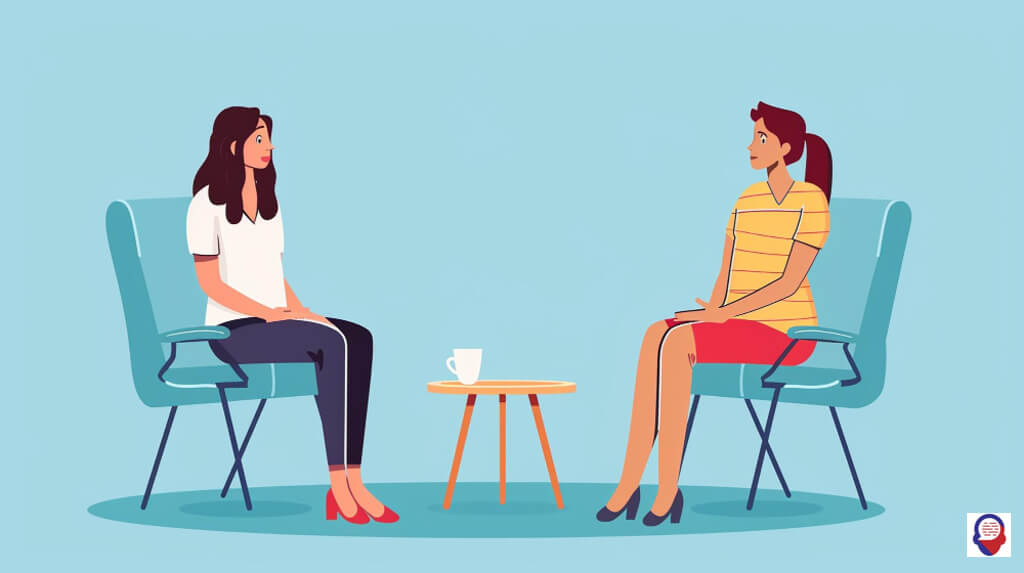Unlock Your Inner Confidence with CBT Techniques
Low self-confidence is more than just a fleeting moment of doubt. It’s a persistent, nagging voice that whispers you’re not good enough, a heavy anchor that holds you back from seizing opportunities, speaking your mind, and living a full, authentic life. It can feel like an unchangeable part of who you are. But what if it isn’t? What if confidence wasn’t something you were born with, but a skill you could build? There is a powerful, evidence-based method that has helped millions of people rewrite their internal script and build genuine, lasting self-worth. It’s called Cognitive Behavioural Therapy, or CBT, and it provides a practical roadmap to dismantle the very foundations of self-doubt. This isn’t about empty affirmations or "faking it till you make it." This is about fundamentally changing your relationship with yourself.

What Exactly Is Cognitive Behavioural Therapy?
Cognitive Behavioural Therapy, widely known as CBT, is a structured type of psychological treatment that helps you understand and change the destructive patterns in your thinking and behaviour. It operates on a simple but profound principle, that your thoughts, emotions, physical sensations, and actions are all interconnected and that negative thoughts and feelings can trap you in a vicious cycle.
Unlike some other forms of therapy that delve deep into the distant past to find the roots of a problem, CBT is forward-facing and solution-oriented. It focuses on the challenges you face in the here and now. The therapy gives you practical coping strategies and tools to deal with your problems in a more positive and effective way. By breaking down overwhelming problems into smaller, more manageable parts, CBT empowers you to change these negative patterns and improve the way you feel.
The "cognitive" part of the therapy helps you question and reframe the unhelpful thoughts that fuel your low self-esteem. The "behavioural" part helps you change the actions and habits that reinforce those negative beliefs. It’s a dynamic duo, working together to help you build a new foundation of confidence based on evidence and experience, not on old, ingrained fears.

How Does Low Self-Confidence Actually Develop?
Low self-confidence often develops from a complex interplay of negative past experiences, ingrained unhelpful thinking styles, and self-defeating behaviours that create a self-perpetuating cycle. It is rarely caused by a single event but is instead built over time, brick by brick, until it feels like an impenetrable fortress of self-doubt.
This process can begin in childhood and be reinforced throughout our lives by social comparisons, setbacks, and our own internal critic. The result is a core belief system that tells us we are somehow lacking or unworthy. Understanding these components is the first step toward dismantling them and rebuilding a healthier sense of self.

Can Childhood Experiences Shape Our Confidence?
Yes, childhood experiences play a foundational role in shaping our self-confidence by forming our earliest "core beliefs" about ourselves, others, and the world. These beliefs, developed when we are most impressionable, can persist into adulthood and act as the invisible lens through which we view all our subsequent experiences.
If a child frequently receives criticism from parents, teachers, or peers, they may internalise the core belief, "I am incompetent." Similarly, experiences of neglect, bullying, or failing to meet perceived family or societal standards can lead to beliefs like, "I am unlovable," or "I am a failure." These are not rational conclusions, they are emotional imprints left by powerful early life events.
These core beliefs then operate automatically in the background of our minds. They influence how we interpret neutral situations, what we pay attention to, and what we remember. A person with a core belief of being unlikable might interpret a friend cancelling plans as a personal rejection, completely ignoring other plausible explanations, thus reinforcing the original negative belief.

What Role Do Our Thoughts Play?
Our thoughts play the role of a continuous internal narrator, and if that narrator is consistently critical, pessimistic, and judgemental, it directly and relentlessly erodes our self-confidence. This internal monologue isn’t just background noise, it is the very engine of our emotional state and our perception of self-worth.
In CBT, these intrusive, unhelpful thoughts are often called Automatic Negative Thoughts, or ANTs. They pop into our heads automatically, often without us even noticing, and we tend to accept them as absolute truth. Thoughts like "I’m going to mess this up," "Everyone thinks I’m an idiot," or "I’ll never be as good as them" are classic examples.
These ANTs don’t just make us feel bad in the moment. They actively shape our reality by filtering our experiences. If you believe you are incompetent, you will constantly be on the lookout for evidence to prove it, while conveniently ignoring or dismissing any evidence to the contrary. This creates a powerful confirmation bias that keeps your self-confidence trapped at rock bottom.

How Do Our Behaviours Reinforce Low Confidence?
Our behaviours serve as the final, crucial link that locks the cycle of low confidence in place, reinforcing the very beliefs that drive them. Actions like avoiding challenges, procrastinating on important tasks, or seeking constant reassurance from others provide temporary relief from anxiety but send a powerful message to our brain, "I was right to be scared, I really can’t handle it."
This is known as a safety behaviour. For instance, if you fear public speaking because you believe you’ll sound foolish, avoiding every opportunity to speak reinforces the idea that public speaking is indeed a dangerous threat you are incapable of managing. If you constantly ask your partner if they love you, you are reinforcing your own belief that you are inherently unlovable and need external validation to feel secure.
Every time we act on a low-confidence belief, we strengthen it. We miss the opportunity to gather new, contradictory evidence, the evidence that we can, in fact, handle the situation, that people might value our opinion, or that we can survive making a mistake. This vicious cycle of negative thought, anxious feeling, and avoidant behaviour is precisely what CBT aims to interrupt and reverse.

How Can CBT Specifically Help Build Self-Confidence?
CBT helps build self-confidence by providing a structured toolkit to systematically identify, challenge, and replace the negative thoughts and behaviours that perpetuate low self-worth. It transforms confidence from an abstract feeling into a tangible skill that can be learned and practiced, empowering you to become your own therapist.
Instead of just wishing you felt more confident, CBT gives you concrete techniques to actively construct it. You learn to act as a detective, gathering evidence for and against your negative beliefs. You become a scientist, running small experiments to test your fears in the real world. This process creates a powerful, positive feedback loop where changes in thinking lead to changes in behaviour, which in turn provides real-world proof that strengthens your new, more confident beliefs.

What Is the First Step in Using CBT for Confidence?
The very first step in using CBT for confidence is to develop awareness by systematically identifying your automatic negative thoughts (ANTs) and the specific situations that trigger them. You cannot change a pattern you do not recognise, so this initial phase is all about observation without judgement.
This is often done through a process of thought monitoring, frequently using a tool called a thought record or thought diary. The goal is to become a curious observer of your own mind. When you notice a dip in your mood or a surge of anxiety, you pause and ask yourself, "What was just going through my mind?"
You begin to connect the dots between external events and your internal reactions. You might notice that meeting new people triggers thoughts of rejection, or that receiving feedback at work triggers thoughts of incompetence. This act of simply noticing and recording the thought, the situation, and the resulting feeling is a monumental step. It separates you from your thoughts, allowing you to see them as mental events rather than undeniable facts.

How Do You Challenge Negative Thoughts?
You challenge negative thoughts by treating them as hypotheses to be questioned, not as established facts. This process, known as cognitive restructuring, involves examining your thoughts for evidence, logic, and alternative perspectives, effectively putting them on trial.
Once you have identified an automatic negative thought, you stop accepting it at face value. Instead, you engage with it critically, like a detective investigating a case. You start asking probing questions to dismantle its power. This isn’t about pretending everything is positive, it’s about finding a more realistic and balanced viewpoint.
A few powerful questions you can ask yourself include, "What is the concrete evidence for this thought?" and "What is the evidence against it?" You might also ask, "Am I confusing a thought with a fact?" or "Is there another, more compassionate way to look at this situation?" Another incredibly useful technique is to ask, "What would I say to a dear friend if they had this exact thought?" We are often far kinder and more rational with others than we are with ourselves.

What Are Common Thinking Traps to Avoid?
Common thinking traps, also known as cognitive distortions, are irrational and habitual ways of thinking that warp reality, convince us of things that aren’t true, and directly sabotage our self-confidence. Learning to spot these traps is like getting a user manual for your brain, allowing you to catch and correct these errors in real-time.
One of the most common is All-or-Nothing Thinking, also called Black-and-White Thinking. This is where you see things in absolute terms, if your performance falls short of perfect, you see yourself as a total failure. There is no middle ground, no room for nuance or "good enough."
Another trap is the Mental Filter, where you pick out a single negative detail and dwell on it exclusively, until your vision of all reality becomes darkened. You might receive a performance review with ten positive comments and one suggestion for improvement, yet you obsess over that one suggestion for days, completely discounting the praise.
Overgeneralisation is when you see a single negative event as a never-ending pattern of defeat. You get turned down for one date and think, "This always happens to me, I’ll be alone forever." Jumping to Conclusions is another distortion with two main flavours, Mind Reading, where you assume you know what others are thinking about you, and Fortune Telling, where you predict a negative outcome and treat it as a certainty.
Finally, there’s Catastrophising, where you expect disaster to strike, and Personalisation, where you believe you are the cause of some negative external event for which you were not primarily responsible. Recognising these patterns is the first step to breaking free from their grip on your confidence.

How Does Changing Behaviour Build Confidence?
Changing your behaviour through planned, deliberate actions provides indisputable, real-world evidence that directly contradicts your negative beliefs, creating a virtuous cycle that builds authentic confidence from the ground up. While challenging thoughts is powerful, proving them wrong through experience is transformative.
This is the core idea behind "behavioural experiments." You identify a core negative belief, for example, "If I share my idea in the meeting, everyone will think it’s stupid and I’ll be embarrassed." Your old behaviour would be to stay silent to avoid this feared outcome. The new behaviour is to conduct an experiment.
You design a small, manageable step. Perhaps you decide to share just one small point in the next team meeting. You then carry out the experiment and, crucially, observe the results like a scientist. Did people laugh? Did your boss tell you it was a stupid idea? Or, more likely, did people listen, nod, or even build on your idea?
Each time you conduct an experiment like this, you gather data. This data is not a hypothetical argument in your head, it’s real-world proof. This experience directly weakens the old belief and begins to build a new, more accurate one, such as "My contributions are sometimes valued." This is how you move from intellectually knowing you should be confident to experientially feeling it.

What Are Some Practical CBT Exercises I Can Try?
You can begin your journey with several highly practical and effective CBT exercises that you can do on your own, such as consistently using a thought diary, deliberately creating a positive data log, and planning small, structured behavioural experiments. These tools move the theory of CBT into direct, confidence-building action.
These exercises are not quick fixes but are more like a workout routine for your mind. The more consistently you practice them, the stronger your "confidence muscle" will become. They work by systematically interrupting old, destructive habits and replacing them with new, constructive ones.

How Do I Use a Thought Diary Effectively?
To use a thought diary effectively, you need to be consistent and thorough, moving beyond simply recording a negative thought to actively challenging it and formulating a more balanced alternative. The power of the diary lies in this complete, multi-step process.
First, whenever you feel a negative emotion like anxiety, sadness, or shame, document the Situation, what was happening at that moment. Second, write down the Automatic Thought that popped into your head. Be honest and capture the exact words. Third, identify the Emotion you felt and rate its intensity on a scale of 0 to 100.
Here is the crucial part. The fourth step is to create an Alternative, Balanced Thought. This involves looking at the evidence, considering other perspectives, and avoiding the cognitive distortions we discussed earlier. Your goal is not blind positivity but realistic balance. Finally, the fifth step is to Re-rate your Emotion. You will almost always find that the intensity of the negative emotion has decreased significantly after you’ve engaged in this rational process.

What Is a Positive Data Log?
A positive data log is a simple yet profoundly effective journal where you intentionally record daily evidence that contradicts your negative self-beliefs. It is a targeted exercise designed to combat the "mental filter" distortion that causes you to ignore or dismiss your own successes and positive qualities.
At the end of each day, take five minutes to write down at least three things that went well or that you feel good about. These don’t have to be monumental achievements. They can be small things, like completing a task you’d been putting off, receiving a compliment, helping a colleague, or simply handling a difficult conversation better than you expected.
The purpose of this log is to train your brain to notice the good. People with low self-confidence have a strong bias towards negativity, their brains are like Velcro for bad experiences and Teflon for good ones. By deliberately writing down positive data, you force your brain to acknowledge it, creating a growing file of evidence that you are, in fact, capable, likable, and worthy.

How Can I Plan a Behavioural Experiment?
You can plan a successful behavioural experiment by following a clear, four-step process, identifying a fear-based belief, making a specific prediction, designing a small and safe test, and then reflecting on the actual outcome to gather real evidence. This methodical approach takes the fear out of facing your fears.
First, identify the belief you want to test. For example, "I am too awkward to make small talk with new people." Second, make a specific, testable prediction. "If I try to talk to a stranger at the coffee shop, they will think I’m weird and will cut the conversation short."
Third, design the experiment. It must be a small, manageable action, not a huge leap. Maybe your experiment is simply to ask the barista how their day is going and see what happens. The key is to make it something you can actually do. Fourth, after you’ve done it, reflect on the results. What actually happened? Did your catastrophic prediction come true? Or did the barista respond politely? Compare the prediction to the outcome. This comparison is where the learning and confidence-building occur.
Frequently Asked Questions

How long does it take for CBT to improve self-confidence?
The timeline for seeing improvement with CBT varies from person to person, but many people begin to notice positive changes within a few weeks of consistent practice. Significant, lasting change typically occurs over a period of 12 to 20 sessions with a therapist, or a few months of dedicated self-help work. The key factor is not just time, but the consistency and effort you put into applying the techniques in your daily life.

Can I do CBT for self-confidence on my own?
Yes, you can certainly practice many CBT techniques for self-confidence on your own using workbooks, apps, and online resources. The principles of identifying thoughts, challenging distortions, and conducting behavioural experiments are accessible. However, working with a qualified CBT therapist can provide guidance, accountability, and support in navigating more deeply ingrained beliefs that can be difficult to tackle alone.

Is CBT the only therapy for low self-confidence?
No, CBT is not the only therapy for low self-confidence, but it is one of the most researched and effective. Other therapeutic approaches, such as Acceptance and Commitment Therapy (ACT), Compassion-Focused Therapy (CFT), and psychodynamic therapy, can also be very helpful. The best therapy often depends on the individual and the specific roots of their self-esteem issues.

What if I try these techniques and still feel stuck?
If you try these CBT techniques on your own and still feel stuck, it is a strong sign that seeking professional support would be beneficial. A trained therapist can help you identify blind spots, uncover deeper core beliefs you may not be aware of, and tailor the approach specifically to your needs. Feeling stuck is not a sign of failure, it’s a sign that a little guidance could make all the difference.
Your journey to lasting self-confidence doesn’t have to be walked alone. Building a strong sense of self-worth is one of the most important investments you can make, and sometimes, the most courageous step is asking for a guide.
At Counselling-uk, we are committed to providing a safe, confidential, and professional place to get advice and help with mental health issues, offering support for all of life’s challenges. If you are ready to move beyond self-doubt and build the authentic confidence you deserve, our qualified therapists are here to support you. Reach out today to begin your transformation.





Practicing self-acceptance isn’t always easy but with patience and effort, it’s possible to learn how to love and appreciate yourself fully. When done correctly, it can open the door to greater fulfillment in life.
Developing Assertiveness Skills